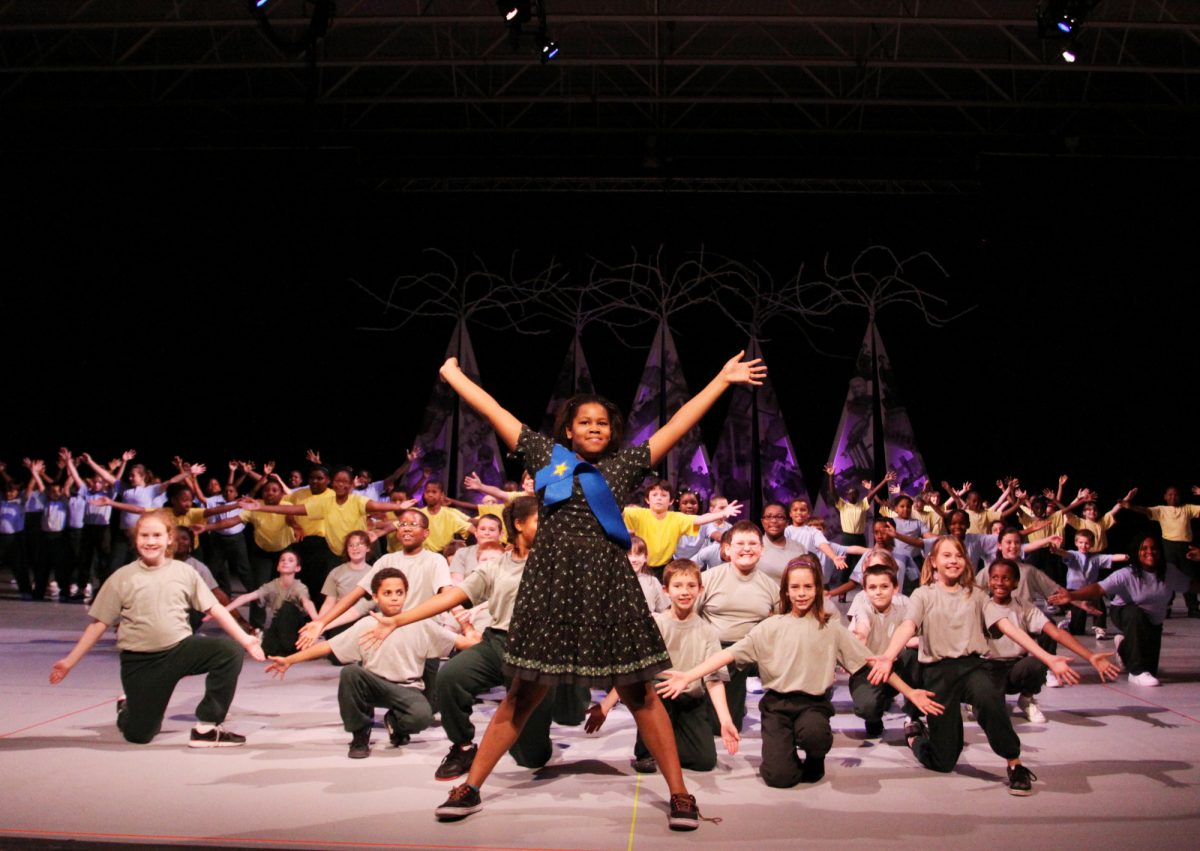Richmond Ballet’s Minds in Motion program gives city school students a different type of extra-curricular activity credit: ballet.
While thousands of Virginia students walked across stages to collect their diplomas last year, several hundred marked the end of the school year in a different way — with the grand finale of Minds in Motion, a program by the Richmond Ballet that sends dance teachers into the public schools. Virginia requires fourth graders to study math, language arts, science, and history, but about two dozen districts have added another subject to the curriculum. Once a week they gather to study ballet.
Stoner Winslett, the organization’s artistic director, always had a passion to give back to the Richmond community. Minds in Motion was directly inspired by a National Dance Institute program, founded by former New York City Ballet principal dancer Jacques d’Amboise.
“The goal was to allow the children of inner city schools to experience what it’s like to be an artist — to seek excellence in an art form,” said d’Amboise. “It’s not to make them dancers, painters or musicians. Using the finest professionals, we introduce them to an activity that demands excellence in themselves. There’s no winner or loser, as in sports. It’s a motivational program for children that works.”

Now in its 25th year, Minds In Motion has successfully expanded from two to 27 schools, serving students in Richmond, Chesterfield, Henrico, Hopewell, Charlottesville, Chesapeake, and Woodbridge. In addition, the program has an international component working with Israeli and Arab children in the Middle East. Acclaimed by teachers, parents and students, Minds In Motion has grown to become a major focus of Richmond Ballet’s education and outreach mission.
“It allows us to introduce movement when we first enter the classroom,” said Jordan Glunt, acting director of Minds In Motion. “Everyone has to participate.”
Language is instrumental to their approach in supporting learning. The use of language, integrated with the movements students are taught, helps each dancer learn their steps. Working together as a group, emphasizing teamwork rather than competition, also helps make the students comfortable enough to learn well.
“Students will pick up choreography, the connection of steps, easier and faster if we give them words to say,” Glunt explained. “As they progress, they’re building on steps, linking on steps which leads to greater choreography — and they’re dancing before they realize they are truly dancing.”
Students also gain important life skills: not only the discipline necessary to master the routines, but the permission to be creative and follow their muse in a less rigid fashion.

“It does take discipline, and it is hard work, but it also can be very freeing,” Glunt said. “We really support creativity. They get this sense of play, in a way. We can have fun, but there is a structure to it that is getting them to learn and move, and they really start to work together as a class.”
Even the boys who initially shun ballet, thinking of the dance form as intrinsically feminine, often find it has its merits.
“Professional football players are taking ballet classes to help with being more agile and quick on their feet, and able to move quickly,” said Glunt. “Virginia students understand that because they’re dancing, they’re working really hard; they break a sweat. And by the end of the Minds in Motion class, they’ll think, ‘Oh!’ Some of my favorite experiences are boys saying, ‘I’m not doing ballet!’ And by the end of the year, they’re the ones in the front row saying, “Yes!”’
Both teachers and students report that ballet has boosted their self-confidence, offering another way to succeed at school away from the rigid segmentation of letter grades. Glunt says it’s an experience that stays with them long after the curtain comes down. Minds In Motion even has an after-school scholarship class, designed for students with an aptitude for dance, called Team Excel.
“Those kids invited to audition get that ‘audition experience,’ and then they find out if they made it into Team Excel or not,” says Glunt.
Team Excel, now in its second year, takes place on the ground level of Richmond Ballet. About 40 children have the experience of touring and dancing in the actual company. They also get to experience other forms of dance besides ballet, like tap, jazz, musical theatre, and modern dance. They’re viewing classes along with their families, who find joy in watching their children dance.

All this practice culminates in their spring performance at the Dominion Energy Theatre, where all the fourth grade classes and schools come together for a professional production.
“It is truly done by the fourth graders. All of us teaching artists and musicians get to step away and sit in the audience and cry tears of joy in watching the students put on this amazing performance,” says Glunt, who grew teary-eyed with happiness.
“I’ve run into students I taught 10 years ago in the grocery store, and they’ll say, ‘I remember my finale dance,’” says Glunt. “They’ll dance in the grocery store aisle, the entire finale.”
To learn more about Minds In Motion and their programs, check out their website here and catch up with them through the Richmond Ballet on social media.



